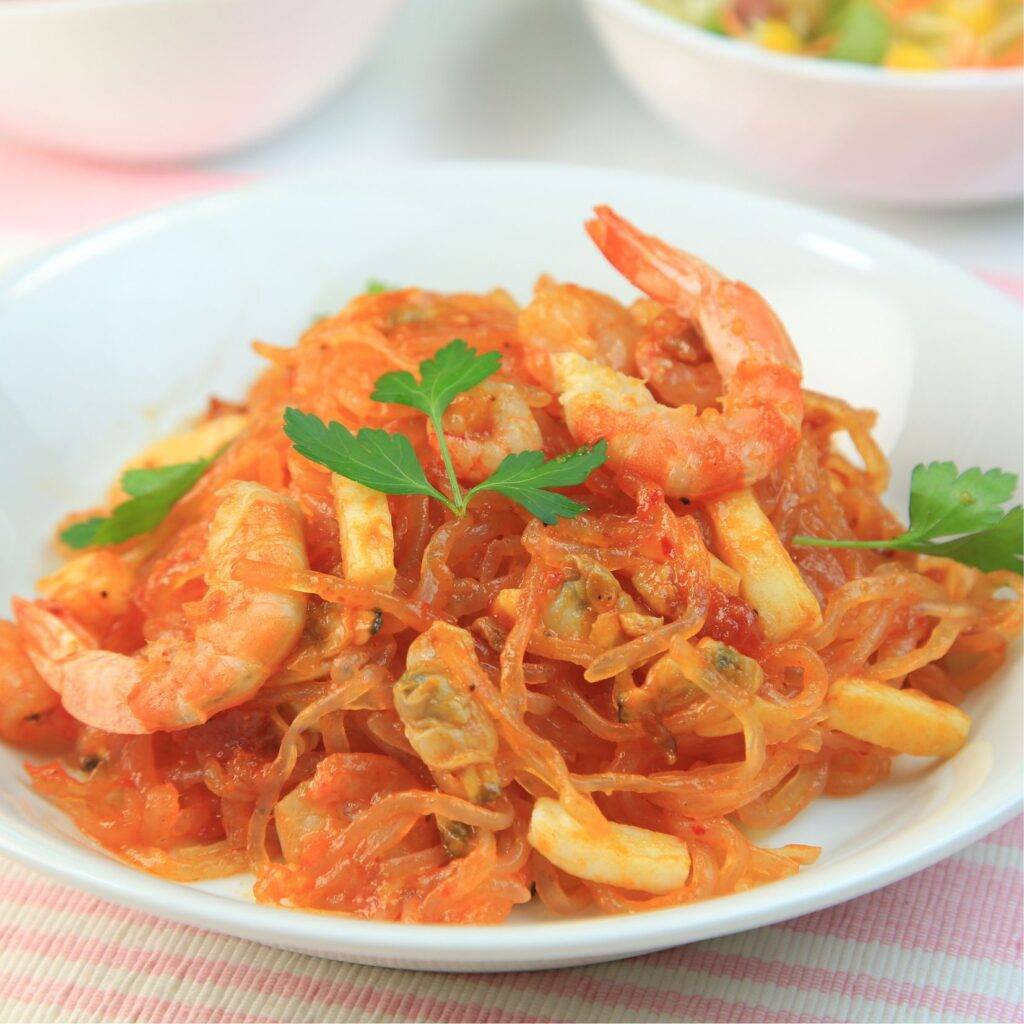
Contact Us through info@lovekonjac.com
Shirataki noodles (aka miracle noodles, konjak noodles, or konnyaku noodles) is an ingredient popular in Asian cuisine. It’s made from konjak plant which is ground and then shaped into noodles, spaghetti, lasagne, mostaccioli, udon,fettuccini or even rice. Shirataki noodles are almost zero calorie and zero carb.
They are 97% water, 3% fibre and zeroes of protein and fat. There are 8.4 kcal and about 0.2 gram of net carbs per 100 g (3.5 oz) of shirataki noodles. If you find that the packaging says “zero carbs”, etc. it’s because the FDA allowed products with less than 5 calories, less than 1 gram of carbs, protein and fat to be labeled as zero.

1. Neutral Flavor: Shirataki noodles have a very neutral flavor. They don’t have the distinctive taste that wheat-based pasta has, which makes them versatile in absorbing the flavors of the sauces and ingredients they are cooked with.
2. Chewy Texture: The texture of shirataki noodles is often described as chewy or rubbery. Some people may find this texture different from the soft and tender texture of traditional pasta. The chewiness is a result of the glucomannan fiber content.
3. Absorbs Flavors: One of the advantages of shirataki noodles is that they easily absorb the flavors of the sauces and seasonings in a dish. This makes them a good choice for various recipes, as they can take on the taste of the ingredients around them.
4. Convenience: Shirataki noodles can be eaten directly upon opening as they are precooked.
Both taste and texture can be significantly improved if you follow this guide. The golden rule is to rinse them about 1 minute and pan-fry them without oil or other liquid in order to remove as much water as possible. The less water remains in the noodles, the better the texture. Once they are prepared, they can be cooked in sauces, gravies, with cheese or in stir-fries.

1. Drain the noodles. Discard all of the water from the package. Place the noodles in a large sieve and rinse under running water.
2. Drain the noodles and place on a hot pan without any grease or liquids. Fry over a medium-high heat for about 5 There will be a lot of steam and that’s what you want to achieve. Remove as much water as possible without drying them out. If they become too dry, they will significantly reduce in size. Using tongs, you’ll need to turn the noodles to avoid that. This step is important for their texture.
3. When done, place in a container. Use in stir-fries, cook is sauces, gravies or add your favorite seasonings to boost the flavor.
Try in our Easy Shirataki Noodles Salad Recipe!